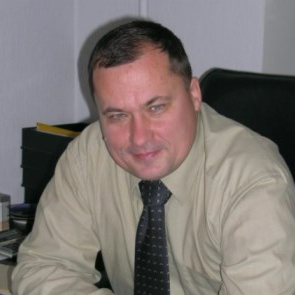Waves and Flows in Basins of Complex Geometry
A special issue of Water (ISSN 2073-4441). This special issue belongs to the section "Oceans and Coastal Zones".
Deadline for manuscript submissions: closed (31 December 2022) | Viewed by 2544
Special Issue Editors
Interests: natural and anthropogenic disasters; internal, edge and surface waves; physics of sea ice; wave climate; dynamics of pollutions; hydraulic engineering and constructions; numerical simulations; computational fluid dynamics
Special Issues, Collections and Topics in MDPI journals
Interests: mathematical modelling; mathematical physics; asymptotics methods; fluid dynamics
Special Issue Information
Dear Colleagues,
Dynamic processes in real water basins (e.g., marine areas, bays, fjords, straits, lakes and reservoirs) include waves of various types and wave-induced flows, gravity currents, convective, advective and diffusion processes, etc. All these processes are, generally speaking, nonlinear and can interact with each other. At the same time, natural basins have a complex bathymetry and an indented coastline, which significantly complicates research for practical problems. The origins for the occurrence of wave motions are various: fluctuations in atmospheric pressure and wind, tides and inertial movements, earthquakes and landslide processes, flow around bottom irregularities and anthropogenic causes. Waves and currents play an important role in the transformation of the sea bottom and coastline, changes in biolandscape, mixing of water layers, transport of pollutants and admixtures, propagation of acoustic signals and migration of marine animals, and can also be dangerous for marine engineering structures, surface and underwater navigation, etc.
This Special Issue is devoted to the description of nonlinear dynamics of wave fields (surface, internal, trapped, inertial and others) in horizontally and/or vertically inhomogeneous basins with boundaries having complex geometry. Inhomogeneity can be due to both a variable bottom depth and/or a vertical stratification in density and/or current, which can also be horizontally variable. In fact, this wide class of problems implies the mathematical modeling of the initial-boundary problem for the system of hydrodynamics equations for a horizontally and vertically inhomogeneous fluid (or approximate models of various complexity levels) in a domain of a geometrically complex configuration in the field of gravity and Coriolis forces, taking into account external conditions (tidal currents, various types of boundary conditions, atmospheric forcing, etc.).
We invite contributions covering a broad range of topics, including observational data and their analysis, theoretical estimates, numerical modeling, nonlinear fluid dynamics, wave interactions, Lagrangian transport and accounting the influence of additional factors (rotation, dissipation, tides, presence of waveguides, resonant properties of the water basin, etc.) in the context of wave phenomena in inhomogeneous environments.
Prof. Dr. Andrey Kurkin
Prof. Dr. Vitaly V. Bulatov
Dr. Dmitry Kovalev
Guest Editors
Manuscript Submission Information
Manuscripts should be submitted online at www.mdpi.com by registering and logging in to this website. Once you are registered, click here to go to the submission form. Manuscripts can be submitted until the deadline. All submissions that pass pre-check are peer-reviewed. Accepted papers will be published continuously in the journal (as soon as accepted) and will be listed together on the special issue website. Research articles, review articles as well as short communications are invited. For planned papers, a title and short abstract (about 100 words) can be sent to the Editorial Office for announcement on this website.
Submitted manuscripts should not have been published previously, nor be under consideration for publication elsewhere (except conference proceedings papers). All manuscripts are thoroughly refereed through a single-blind peer-review process. A guide for authors and other relevant information for submission of manuscripts is available on the Instructions for Authors page. Water is an international peer-reviewed open access semimonthly journal published by MDPI.
Please visit the Instructions for Authors page before submitting a manuscript. The Article Processing Charge (APC) for publication in this open access journal is 2600 CHF (Swiss Francs). Submitted papers should be well formatted and use good English. Authors may use MDPI's English editing service prior to publication or during author revisions.
Keywords
- inhomogeneous basins
- numerical modeling
- fluid dynamics
- observations
- internal, surface, trapped and inertial waves
- stratified flows
- wave-induced currents
- seiches
- resonant oscillations
- dynamics of surfactants, admixtures and sediments







